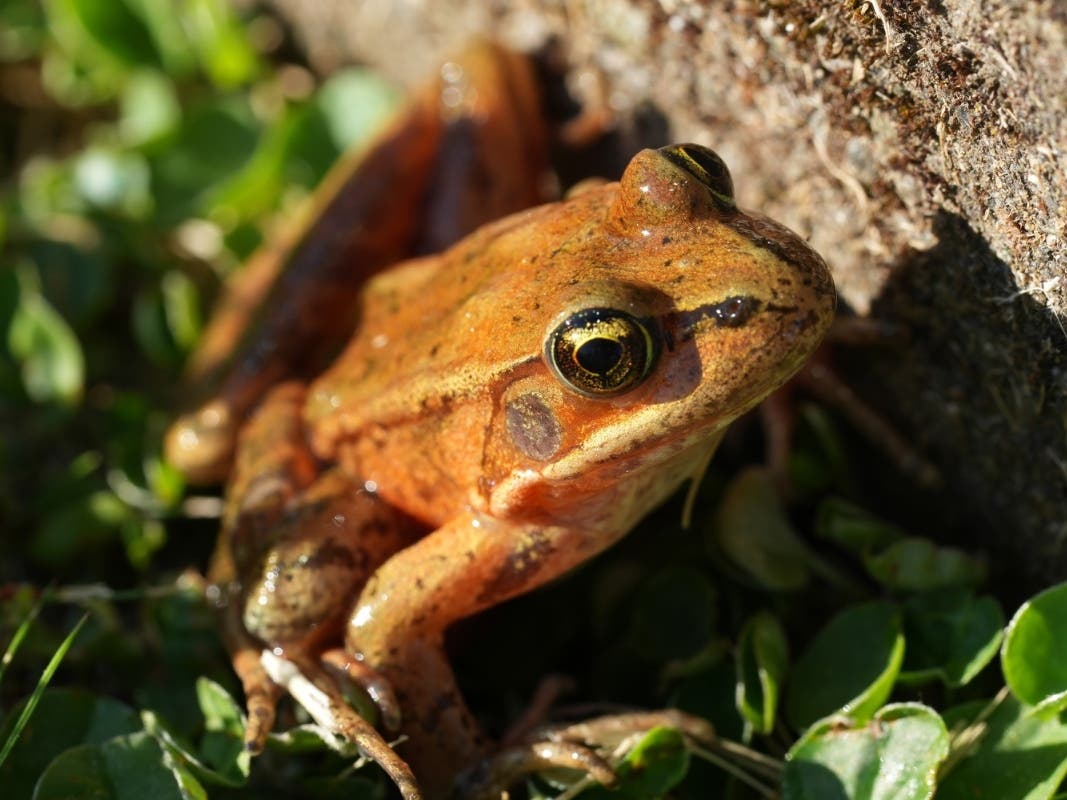Conservation Efforts to Save the California Red-Legged Frog
For several months, scientists at the Aquarium of the Pacific in Long Beach have been working to ensure that hundreds of baby California red-legged frogs can return to their natural habitat in the Santa Monica Mountains. This effort comes after a series of extreme weather events disrupted the breeding grounds of these vulnerable amphibians.
In March, National Park Service personnel collected the eggs of the California red-legged frog and transported them to the Aquarium of the Pacific. There, scientists hatched and raised nearly 600 tadpoles. These tadpoles have now been released back into the Santa Monica Mountains, an area where the species was once thought to be extinct.
Erin Lundy, the manager of conservation initiatives at the Aquarium of the Pacific, expressed pride in the collaboration with the National Park Service. She stated, “Our partners dedicate so much time and expertise to supporting these local species, and it’s incredibly meaningful to be able to play a role in the important work that they do.”
The California red-legged frog was once widespread throughout California. However, by the 1970s, the species had disappeared from much of Southern California due to factors such as habitat loss, fungal disease, and predation by non-native species. Since then, various wildlife and conservancy agencies have worked to reintroduce the species to the region.
Efforts to bring the California red-legged frog back began in 2014. Although still classified as a threatened species, the frog is now showing signs of recovery. Katy Delaney, an ecologist with the Santa Monica Mountains National Recreation Area, noted that while the project has faced challenges over the years, the continued support from partners like the aquarium has helped write a new chapter in the species’ comeback story.
Similar Conservation Projects
In a related effort, the Los Angeles Zoo recently released hundreds of tadpoles and subadult southern mountain yellow-legged frogs into the streams of the San Gabriel Mountains. The southern mountain yellow-legged frog is an endangered species, and the zoo’s conservation program, which started in 2007, has successfully bred and released thousands of these frogs back into their natural habitat.
These efforts highlight the importance of collaborative conservation projects aimed at protecting and restoring native wildlife. By working together, scientists, conservationists, and wildlife agencies are making strides in ensuring that species like the California red-legged frog and the southern mountain yellow-legged frog can thrive in their natural environments.
Ongoing Challenges and Future Goals
Despite the progress made, challenges remain in the conservation of these species. Habitat destruction, climate change, and the presence of invasive species continue to threaten their survival. However, the success of recent releases demonstrates that with dedicated efforts, it is possible to reverse the decline of these amphibians.
Conservationists emphasize the need for continued monitoring and support for these programs. By maintaining healthy ecosystems and addressing the root causes of species decline, there is hope that more endangered and threatened species can recover and flourish.
As these conservation efforts continue, the future looks brighter for the California red-legged frog and other native wildlife. With each successful release, the populations of these species grow stronger, and the message is clear: through science, dedication, and cooperation, it is possible to make a difference in preserving biodiversity.







